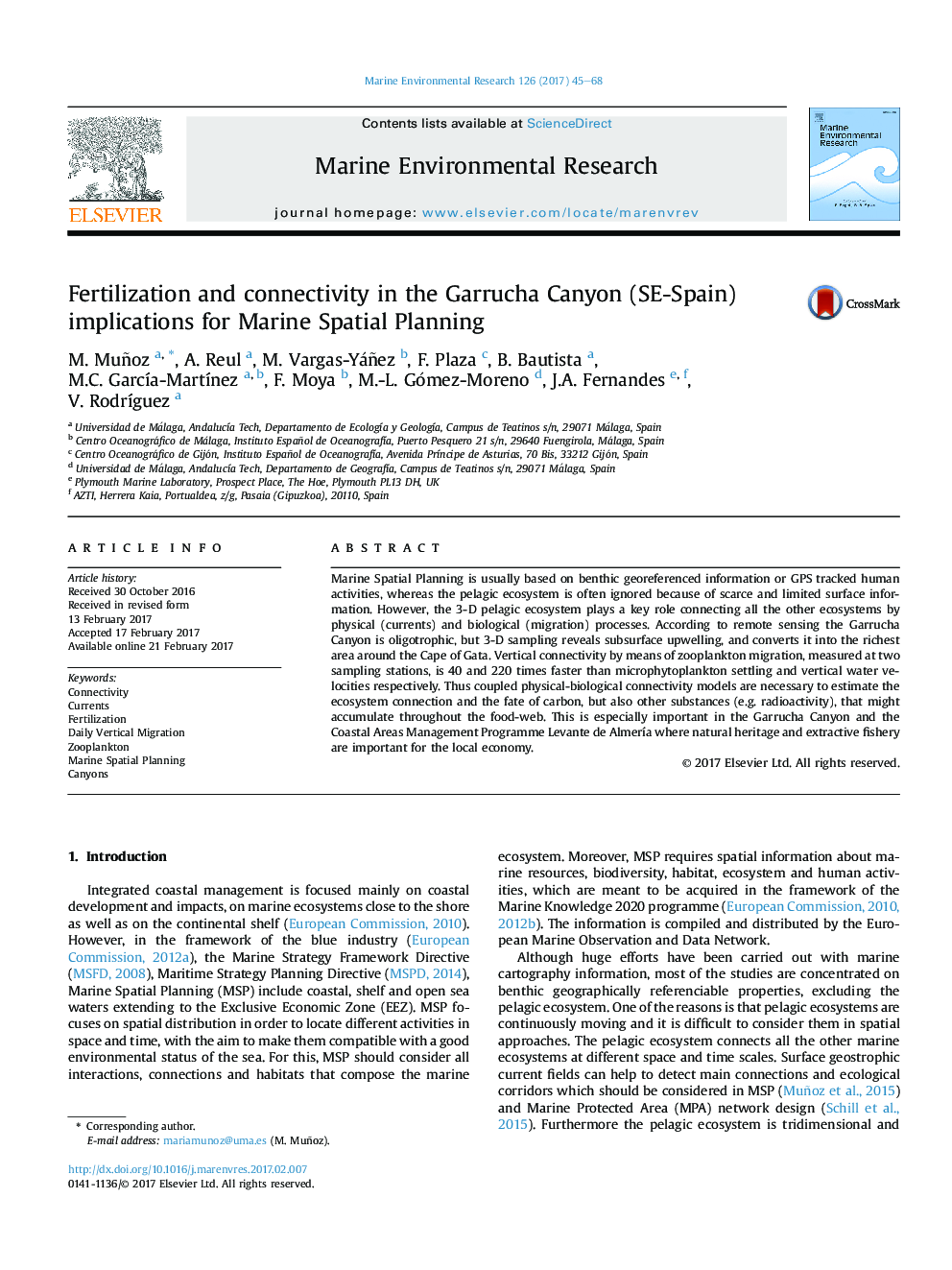| Article ID | Journal | Published Year | Pages | File Type |
|---|---|---|---|---|
| 5766262 | Marine Environmental Research | 2017 | 24 Pages |
Abstract
Marine Spatial Planning is usually based on benthic georeferenced information or GPS tracked human activities, whereas the pelagic ecosystem is often ignored because of scarce and limited surface information. However, the 3-D pelagic ecosystem plays a key role connecting all the other ecosystems by physical (currents) and biological (migration) processes. According to remote sensing the Garrucha Canyon is oligotrophic, but 3-D sampling reveals subsurface upwelling, and converts it into the richest area around the Cape of Gata. Vertical connectivity by means of zooplankton migration, measured at two sampling stations, is 40 and 220 times faster than microphytoplankton settling and vertical water velocities respectively. Thus coupled physical-biological connectivity models are necessary to estimate the ecosystem connection and the fate of carbon, but also other substances (e.g. radioactivity), that might accumulate throughout the food-web. This is especially important in the Garrucha Canyon and the Coastal Areas Management Programme Levante de AlmerÃa where natural heritage and extractive fishery are important for the local economy.
Related Topics
Physical Sciences and Engineering
Earth and Planetary Sciences
Oceanography
Authors
M. Muñoz, A. Reul, M. Vargas-Yáñez, F. Plaza, B. Bautista, M.C. GarcÃa-MartÃnez, F. Moya, M.-L. Gómez-Moreno, J.A. Fernandes, V. RodrÃguez,
